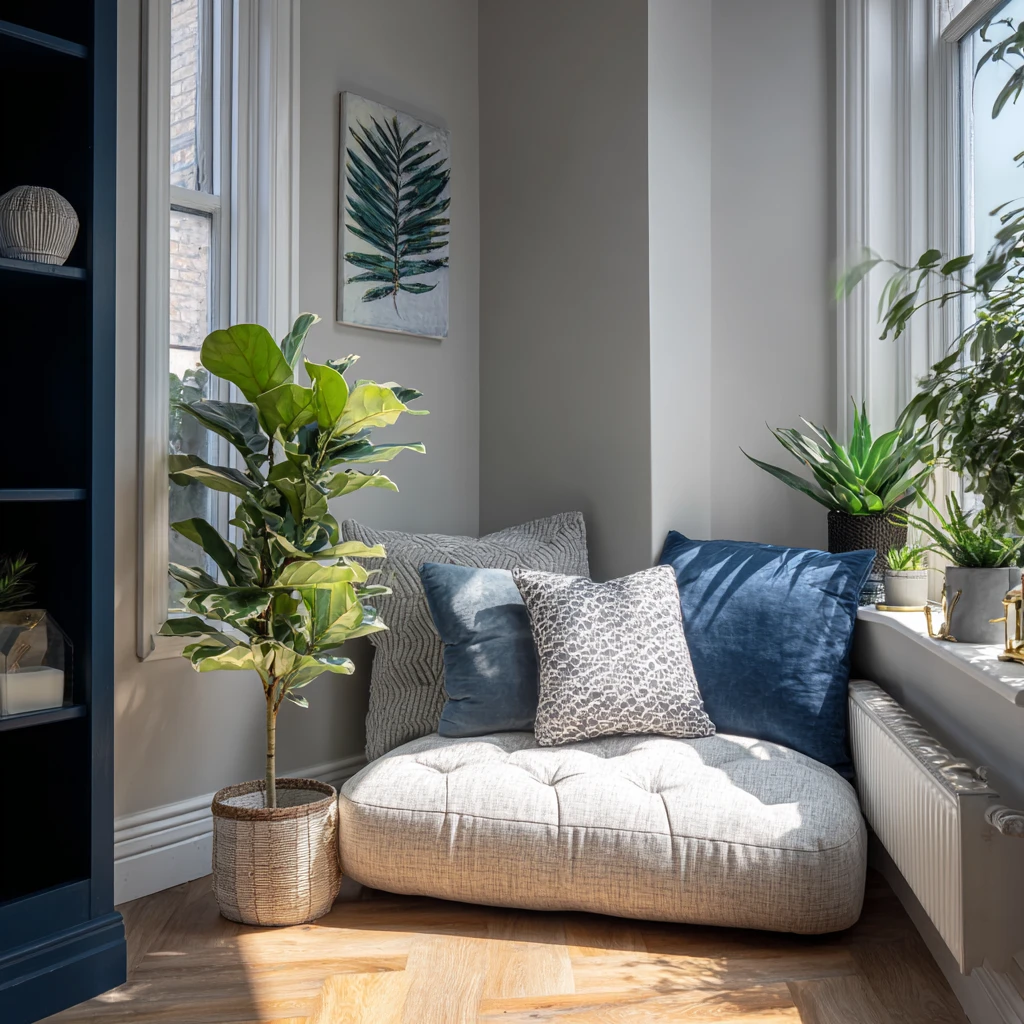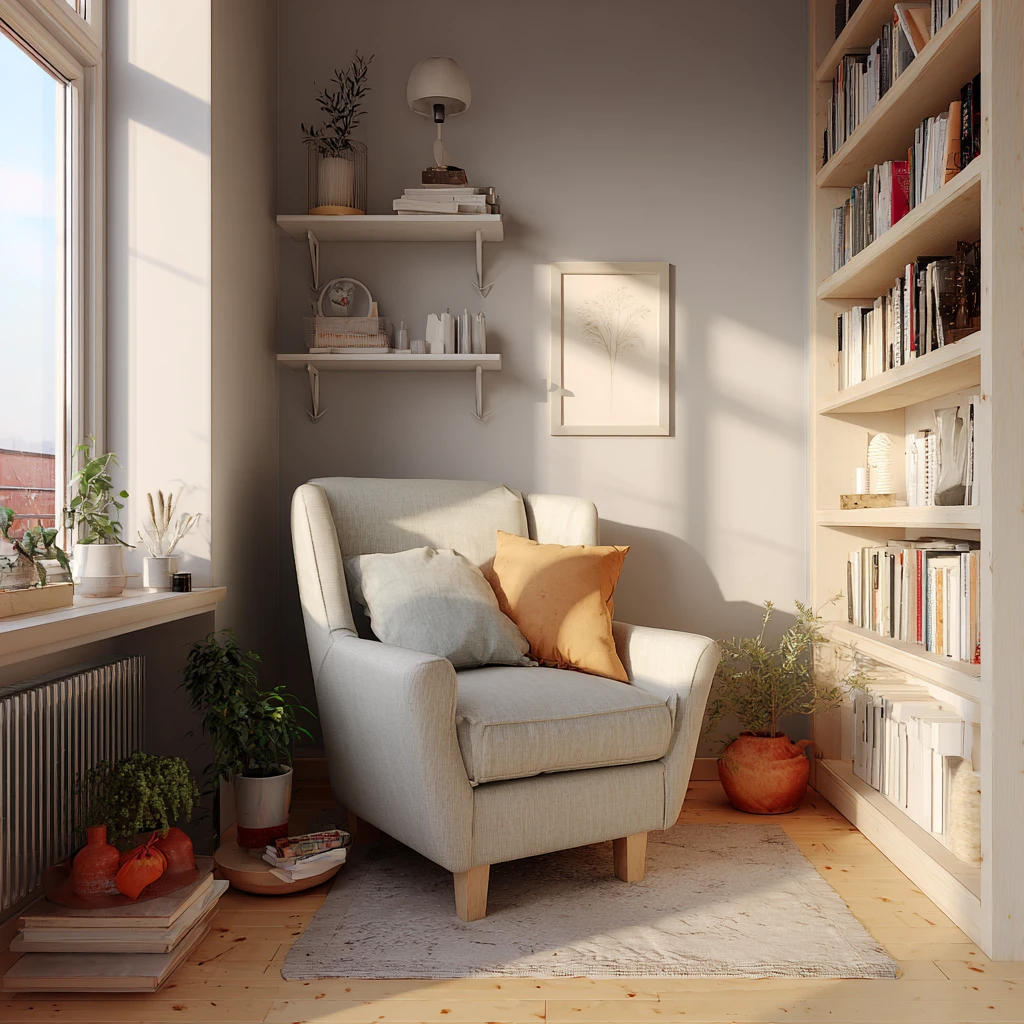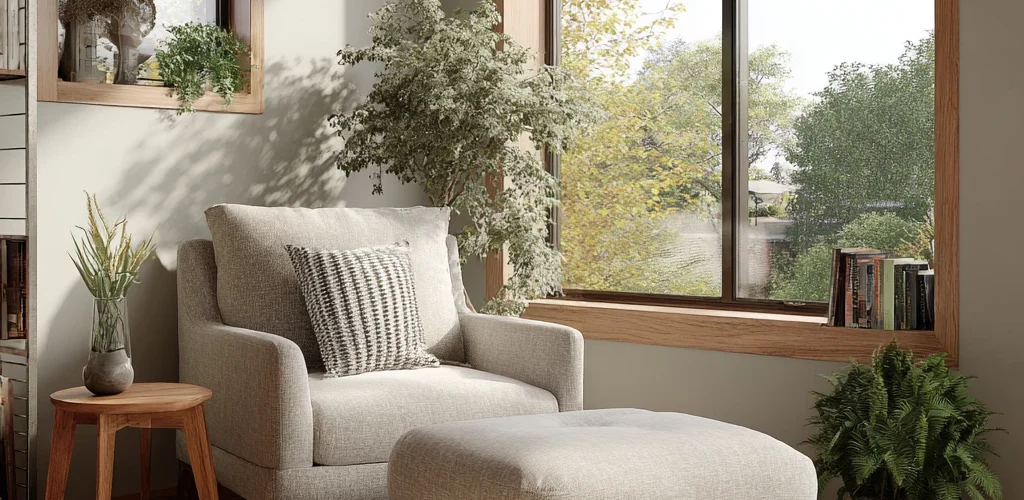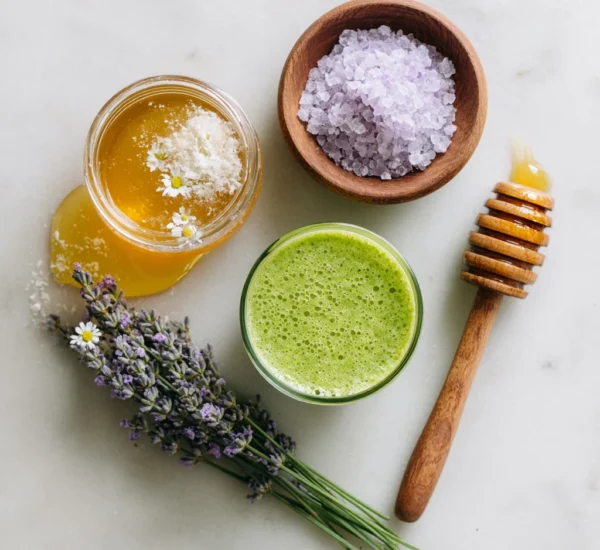How to Design a Calming Home Corner
Creating a calming home corner can be a sanctuary, a place to unwind and recharge from the stresses of daily life. Whether it’s for meditation, reading, or simply a quiet moment, a well-designed calming corner can significantly improve your well-being. This guide will walk you through the essential steps to design your own peaceful haven.

1. Choosing the Perfect Location
The location of your calming corner is crucial. Consider spaces that are naturally quieter and less frequented within your home.
Finding a Quiet Nook
Avoid high-traffic areas like hallways or near the television. A spare bedroom, a corner of your living room, or even a landing area can work well. The goal is to minimize distractions and external noise. Think about natural light. A spot near a window can be ideal, but if that’s not possible, consider the lighting options we’ll discuss later.
Considering Size and Privacy
The size of your calming corner will depend on the activities you plan to do there. A reading nook might require less space than a meditation area with room for yoga. Ensure you have enough room to move comfortably and feel unconfined. Privacy is also paramount. If the area is visible from other parts of the house, consider using screens, curtains, or plants to create a sense of enclosure and intimacy.
Minimizing Clutter
Before you start decorating, declutter the space. Remove anything that doesn’t contribute to a sense of peace and tranquility. This includes unnecessary furniture, piles of papers, and distracting decorations. A clean, uncluttered space is essential for creating a calming atmosphere. Start with a blank canvas and build from there.
2. Creating a Comfortable Foundation
Comfort is key to a successful calming corner. Focus on creating a cozy and inviting atmosphere that encourages relaxation.
Selecting Comfortable Seating
Your choice of seating is critical. Options include:
- Armchair: A plush, comfortable armchair is perfect for reading or simply relaxing.
- Floor Cushions: Large, soft floor cushions are ideal for meditation and create a casual, inviting vibe.
- Beanbag Chair: A beanbag chair offers a relaxed and informal seating option, particularly suitable for younger users.
- Meditation Bench: If your calming corner is primarily for meditation, a meditation bench provides ergonomic support.
Consider the height, depth, and material of the seating to ensure it suits your needs and preferences. Opt for soft, natural fabrics like cotton, linen, or wool.
Adding Soft Textiles
Textiles play a significant role in creating a cozy atmosphere. Incorporate:
- Rugs: A soft rug underfoot adds warmth and defines the space.
- Throw Blankets: Drape a cozy throw blanket over your seating for added comfort.
- Pillows: Use an array of soft pillows in different sizes and textures to enhance comfort and visual appeal.
Choose textiles in calming colors and natural materials to further promote relaxation. Avoid overly bright or stimulating patterns.
Focusing on Temperature and Ventilation
Ensure the temperature in your calming corner is comfortable. If the area tends to be cold, consider adding a small heater or a heated blanket. If it’s often warm, ensure good ventilation by opening a window or using a fan. Maintaining a comfortable temperature is essential for relaxation. Poor air quality can be distracting and hinder your ability to unwind. Consider an air purifier if needed.
3. Incorporating Calming Elements
The elements you choose to include in your calming corner can significantly impact its effectiveness.
Choosing Calming Colors
Color psychology plays a vital role in creating a calming atmosphere. Opt for:
- Blues: Associated with tranquility and peace.
- Greens: Evokes nature and promotes relaxation.
- Neutrals: Whites, creams, and grays create a sense of serenity and spaciousness.
- Pastels: Soft, muted colors are gentle and soothing.
Avoid bright, vibrant colors that can be stimulating and distracting. Consider painting the walls a calming color or using colored accessories to create the desired effect.
Adding Natural Elements
Bringing nature indoors can enhance the calming effect of your corner.
- Plants: Indoor plants purify the air and add a touch of greenery. Choose easy-to-care-for options like snake plants, peace lilies, or succulents.
- Natural Materials: Incorporate natural materials like wood, stone, and bamboo in your décor.
- Water Features: A small indoor fountain or tabletop water feature can create a soothing sound.
The presence of natural elements can help to reduce stress and promote a sense of well-being.
Introducing Aromatherapy
Aromatherapy can be a powerful tool for creating a calming atmosphere.
- Essential Oil Diffuser: Diffuse calming essential oils like lavender, chamomile, or sandalwood.
- Scented Candles: Choose candles with natural scents and avoid artificial fragrances.
- Incense: Burn incense with calming scents like frankincense or myrrh.
Be mindful of allergies and sensitivities when choosing scents. Start with small amounts and adjust as needed.
4. Personalizing Your Space
Personalizing your calming corner is essential to making it a true reflection of your needs and preferences.
Adding Meaningful Objects
Include items that hold personal significance and evoke positive emotions.
- Photos: Display photos of loved ones or cherished memories.
- Artwork: Choose artwork that resonates with you and promotes a sense of calm.
- Books: Keep a selection of your favorite books or inspiring reads.
- Crystals: Some people find crystals to be calming and grounding.
These personal touches will make your calming corner feel more like a sanctuary and less like a generic space.
Creating a Sensory Experience
Engage your senses to enhance the calming effect of your corner.
- Soft Lighting: Use soft, warm lighting to create a cozy atmosphere. Avoid harsh overhead lighting. Dimmable lights are a great option.
- Soothing Sounds: Play calming music, nature sounds, or white noise.
- Comfortable Textures: Incorporate soft, tactile materials like velvet, wool, and cotton.
By appealing to multiple senses, you can create a truly immersive and relaxing experience.
Defining the Purpose of Your Corner
What do you want to achieve in your calming corner?
- Meditation: If the primary purpose is meditation, include items like a meditation cushion, prayer beads, or a journal.
- Reading: For a reading nook, a comfortable armchair, a good reading lamp, and a bookshelf are essential.
- Relaxation: If you simply want a space to unwind, focus on comfort and creating a visually appealing environment.
Tailoring your calming corner to its specific purpose will make it more effective and enjoyable.
5. Maintaining Your Calming Corner
Maintaining your calming corner is just as important as designing it.
Regular Cleaning and Decluttering
Keep your calming corner clean and tidy. Dust regularly, vacuum or sweep the floor, and declutter any unnecessary items. A clean space is essential for maintaining a sense of calm. Make it a habit to tidy up your calming corner after each use. This will prevent clutter from accumulating and ensure that it remains a welcoming space.
Adjusting and Adapting
Your needs and preferences may change over time. Don’t be afraid to adjust and adapt your calming corner to suit your current needs. This might involve changing the décor, adding new elements, or rearranging the furniture. Regularly evaluate your calming corner and make adjustments as needed.
Establishing a Routine
Create a routine for using your calming corner. This will help you to integrate it into your daily life and make it a more effective tool for stress management. Set aside a specific time each day to spend in your calming corner, even if it’s just for a few minutes. This will help you to prioritize self-care and create a consistent habit.
Protecting Your Sanctuary
Keep your calming corner as a safe haven. Respect the purpose of the space. Ask other members of the household to also respect the space and minimize interruptions. This helps to maintain the feeling of tranquility and serenity. Make it clear that this is your sanctuary, and that you need the space to unwind and recharge.

FAQ: How to Design a Calming Home Corner
Q: What are the best colors for a calming corner?
A: Blues, greens, neutrals (whites, creams, grays), and pastels are excellent choices. These colors are associated with tranquility, nature, and serenity. Avoid bright, vibrant colors that can be stimulating.
Q: What elements should I include in a calming corner?
A: Comfortable seating, soft textiles (rugs, throw blankets, pillows), natural elements (plants, wood, stone), aromatherapy (essential oils, scented candles), and personal objects that evoke positive emotions are all great additions.
Q: How big should my calming corner be?
A: The size depends on your planned activities. A reading nook might be smaller than a meditation area. Ensure you have enough room to move comfortably and feel unconfined.
Q: Where is the best place to put a calming corner?
A: Choose a quiet nook away from high-traffic areas. A spare bedroom, a corner of your living room, or even a landing area can work well. Consider natural light and privacy.
Q: How can I make my calming corner more private?
A: Use screens, curtains, or plants to create a sense of enclosure and intimacy. This helps to minimize distractions and create a more peaceful atmosphere.



